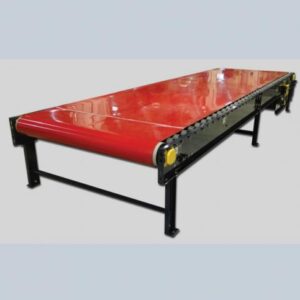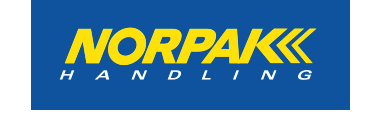 Norpak offers tips on checking and maintaining conveyor belt tension
Norpak offers tips on checking and maintaining conveyor belt tension
June 25, 2021 REDWIRE is news you can use from leading suppliers. Powered by FRASERS.
Posted by Norpak Handling Limited
Norpak Handling provides conveying products and complete turn-key systems to suit your requirements and solve your probl... Read more
Subscribe
Free REDWIRE e-newsletter

Belt conveyors are among Norpak's many offerings.
As a major Canadian supplier of material-handling systems, Norpak Handling Ltd. has a team of experts with valuable experience and can offer advice for customers on checking conveyor belt tension, how to tension belts properly, and how to care for them so they last. See below for some useful tips.
Signs of improper tension
According to Norpak, the most suitable belt tension is usually the lowest possible level that does not cause slippage. High belt tension results in needless wear, to both the belt and the surrounding components, like shafts and bearings. Excessive tension leads to extra pressure that can cause pulleys to break or wear down quickly; it also results in tracking issues that can compromise the smoothness of the conveying process and possibly cause unnecessary downtime. Meanwhile, tension that is too low can cause slippage, pulley lagging, improper belt tracking, and/or premature belt failure.
Norpak advises users to check for improper conveyor belt tension. The easiest signs to spot: belt lacing pulling out, which means excessive tension; cupping or curling belt edges, which means improper tracking; periodic belt stalling, which denotes insufficient tension; belt residue under the conveyor, which denotes improper tracking; and squealing noise, which can signify excessive tension or improper tracking.
The next step is to tension the belt properly. First, one empties the conveyor of all items and tensions the belt until it does not slip; then products are slowly added and the belt is tensioned to avoid slippage until the maximum load capacity of the system is reached. Conveyor belt tension should be tested again, by restarting the conveyor with a full load and checking for slippage.
Customers should continue to maintain conveyor belts via routine inspections, frequent belt cleaning, and never exceeding the weight capacity. Any users can follow these three easy steps on their own, but a professional team is required for more detailed work. Norpak is available for additional maintenance expertise, such as preventative maintenance.
To learn more, contact Norpak.
Share
Posted by Norpak Handling Limited
Norpak Handling provides conveying products and complete turn-key systems to suit your requirements and solve your probl... Read more
